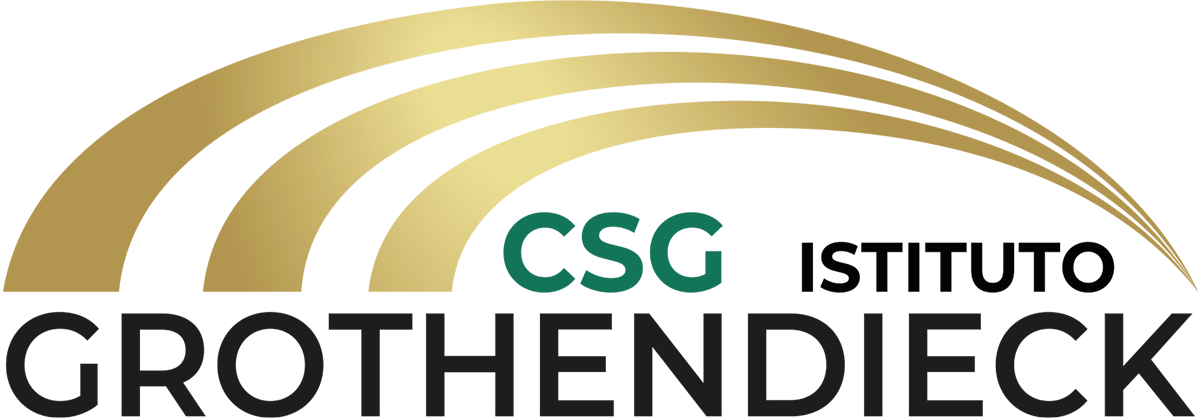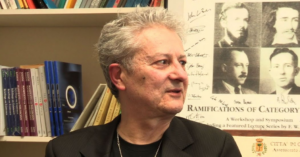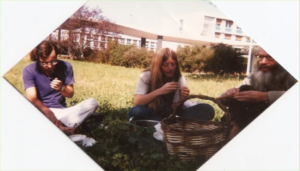The following is a declaration by Charles Alunni upon his appointment as Coordinator of the CSG:
When in the spring of 2007 I proposed a text by Alexandre Grothendieck for the entrance exam to the École normale supérieure de la rue d’Ulm (Sélection Internationale Sciences), I did not imagine the birth of a Grothendieck Institute one day. This text, taken from Récoltes et semailles (Chapter 2. Walk through a work or the Child and the Mother. § 2.20. A glance at the neighbors on the opposite side, p. 80 [transcription by Yves Pocchiola]), had the particularity of focusing on a “hypothetical unitary theory” by proposing a preliminary and founding “philosophical reading”, before any “technical approach”. This text is a little marvel very closely mixing philosophy, mathematics and physics. I then sent it to my friend Pierre Cartier who, some time before, had told me of Grothendieck’s disinterest in physical theories. This text surprised him deeply. Grothendieck states, among other things:
“[…] Still, finding a “satisfactory” model (or, if necessary, a set of such models, “connecting” as satisfactorily as possible…), whether “continuous”, “discrete” or “mixed” in nature – such work will surely bring into play a great conceptual imagination, and a consummate art to apprehend and update mathematical structures of a new type. This kind of imagination or “flair” seems to me to be a rare thing, not only among physicists (where Einstein and Schrödinger seem to have been among the rare exceptions), but even among mathematicians (and here I speak with full knowledge of the facts).
To summarize, I foresee that the expected renewal (if it is still to come…) will come more from a mathematician at heart, well informed of the major problems of physics, than from a physicist. But above all, it will take a man with “philosophical openness” to grasp the crux of the problem. This is in no way technical in nature, but rather a fundamental problem of “philosophy of nature”.”
This text has a lot to do with Olivia Caramello’s “theory of bridges” as well as with what I have developed in terms of “philosophical theory of translation”: it fully illustrates this essential link in Grothendieck between Art, Philosophy and Mathematics.
My second “Grothendickian” memory is an anecdote that left a great impression and greatly surprised me. At the end of a session of my Thinking of Science seminar at the École Normale, a listener came to see me at the end of the session to tell me that he came from a small village in the South of France, and on the recommendation of a person usually met at the local supermarket; someone who had advised him to follow two Parisian activities: the Alain Connes seminar at the Collège de France and the Pensée des sciences seminar at the École Normale. This person was none other than Alexandre Grothendieck.
The third memory, certainly the most “Grothendickian” gesture of all, concerns the sending of my French translation of Regard et destin, an admirable text by Aldo Giorgio Gargani, published by Editions du Seuil in 1990, and of which I imagined in advance the certain pleasure Grothendieck would have had in reading it. It is in truth a real autograph souvenir, with this note, written propria manu on the original envelope: “return to sender”.
My last memory, rather “futuristic”, concerns a very singular text by Alexandre Grothendieck whose existence I discovered in the work of the mathematician Winfried Scharlau, Wer ist Alexander Grothendieck? Anarchy, Mathematics, Spirituality. A biography. Teil 1 Anarchie, Berlin, Books on Demand, 2011. This text is a handwritten letter from young Grothendieck, just 20 years old, dated June 29, 1948 and which he addresses to his “uncle” (in reality Wilhelm Heydorn, his foster father). It is undoubtedly the oldest text he devoted to mathematics. Schurik attempts to explain the essential principles of contemporary mathematics, and the great interest of this short text for the philosopher is that all of Grothendieck is already virtually contained there… Winfried having kindly provided it for me, I will propose to publish the French version in the Quaderni del Centro, the German language being that of the original.
Succeeding our friend and colleague Fernando Zalamea, it is obviously a pleasure and a very great honour for me to be able to contribute to the development of the Centre for Grothendickian Studies, a Centre which will undoubtedly become the reference for decades to come and for all those who intend to work on the oeuvre of Alexander Grothendieck, which is at once monumental, disproportionate and transdisciplinary. As Coordinator of the Centre, I wish to support the research activities of the Centre (symposia, articles, monographs), broaden the approach and understanding of a work with many faces, stimulate the interest of younger generations, coordinate the transcription of unpublished manuscripts (mathematics, literature, philosophy or sociology), and work on the creation of the biennial journal Quaderni del Centro di Studi Grothendieckiani (QCSG), in collaboration with Mateo Carmona, archivist and manager of the Centre’s website, Olivia Caramello, founder of the Centre, and all the Research Associates and Volunteers of the Centre.



